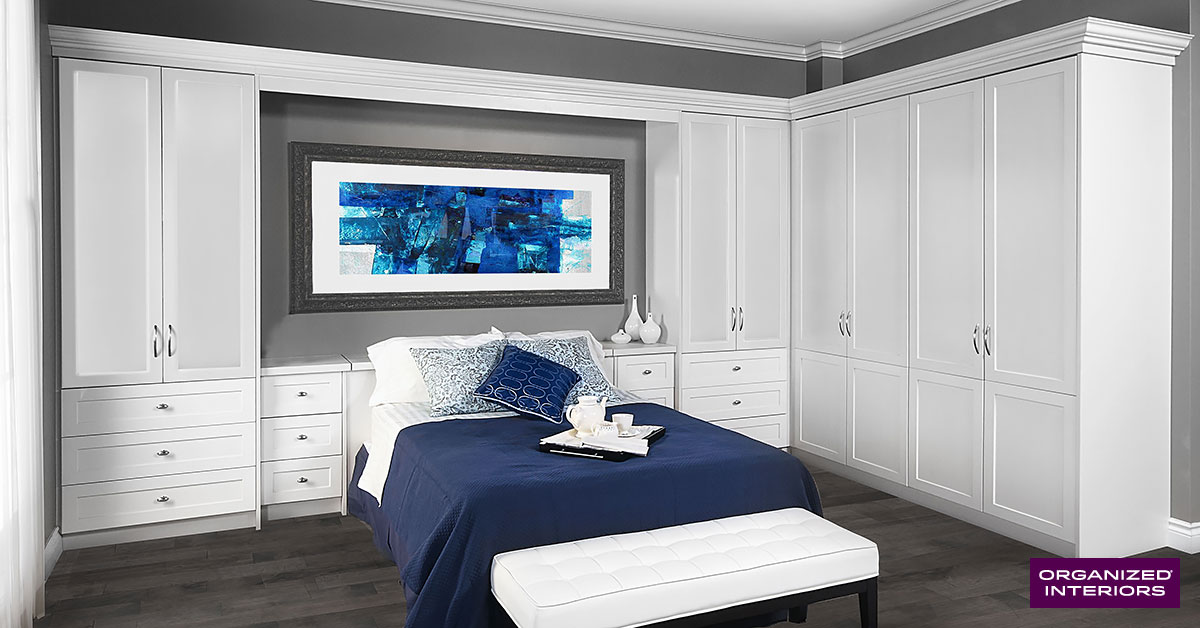Millions of Canadians suffer from seasonal allergies caused by outdoor irritants.
While it’s impossible to avoid allergens caused by the external environment, it is possible to improve indoor air quality in your home.
Reducing clutter is one of the best methods for accomplishing this.
Which allergens cause you to look for solutions to improve indoor air quality?
The most common forms of home allergens are:
- Dust allergens – dust mites are microscopic critters that are a common indoor allergy trigger. Dust mites live off our dead skin cells, along with the dead skin shed by pets (known as dander). They thrive in the more humid regions of your home and are also typically found in bedding areas, carpets, rugs, blankets, upholstery, and drapes.
- Indoor pollen – pollen can makes its way in from outside via open entryways and be carried in by your home’s occupants (including pets). Flowers and plants can also contribute to indoor pollen irritants.
- Mould allergens – any area of your home with high humidity levels (such as the bathroom, basement, and kitchen) can produce mould. The mould spores can become airborne and cause all sorts of potential health problems.
- Chemical pollutants – a wide range of chemical pollutants can trigger allergic reactions. Household cleaners, a poorly ventilated stove, and formaldehyde found in carpets, curtains, and furniture can all be irritants. Even things as seemingly harmless as candles and dryer sheets can emit chemicals that cause allergic reactions in some people.
Why home clutter contributes to poor indoor air quality
Home allergens are impossible to fully eliminate. All homes, even ones that appear to be immaculately kept, harbour them in some form.
However, homes that are overrun by clutter become a haven for allergens to flourish. That’s because clutter gives allergens more surface area to occupy.
Clutter also makes it much harder to clean your home, which gives allergens a more welcoming environment.
Think about it – how often do you actually take the time to move those stacks of clutter in order to clean? The longer an area of your home is untouched with a vacuum or a wipe down with a damp cloth, the more allergens will accumulate.
You’ll also improve indoor air quality by reducing clutter because the airflow in your home will be much better. A critical component of healthy indoor air is the ability to maintain good air circulation. Reducing clutter makes this easier.
Improve indoor air quality with these 11 allergen-reducing solutions
You can improve indoor air quality by using these 11 solutions to reduce the levels of allergens in your home:
- Toss unnecessary clutter – purge unnecessary clutter from your home, which will open up space for air to flow more freely and make your home easier to clean.
- Use effective clutter-reducing solutions – consult an organization professional like Organized Interiors to add the most effective clutter-reducing solutions to your home. Closet organizers and custom bedroom cabinetry like wardrobes and bed surrounds (which eliminates open spaces underneath beds that attracts dust allergens) will help maximize storage space and keep your home tidy.
- Vacuum weekly – make sure you use a HEPA filter in your vacuum to fully trap all dust particles and allergens.
- Eliminate bathroom mould – clean your bathroom tile with an effective mould-killing cleaner on a regular basis.
- Wash your bedding weekly – washing your bedding once a week in water that’s at least 55˚C (130˚F) will kill dust mites. You may also want to buy special bedding that provides more protection from dust mites.
- Wash and brush pets outside weekly and keep them out of the bedroom – you’ll reduce pet dander by cleaning them outside once a week. You can also reduce bedroom allergens by keeping this space off-limits to pets, especially the bed.
- Change your air conditioner and furnace filters regularly – professional opinion varies, but it’s generally recommended these filters be changed every 1-3 months.
- Use a dehumidifier – a dehumidifier prevents mould (remember to change the filter regularly).
- Switch to hard floor surfaces – getting rid of carpeting and rugs and switching to tile, hardwood, or vinyl flooring will give allergens less places to hide.
- Think twice about shampooing your carpets – if getting rid of carpeting isn’t an option, be aware that shampooing them can attract even more dust mites or cause mould to grow.
- Use unscented detergents and cleaners – fragrance-free detergents and cleaners will be less likely to trigger allergic symptoms.

A bed surround maximizes storage space and eliminates open space underneath the bed that attracts dust allergens.
Reducing clutter will improve indoor air quality and reduce your stress
Reducing the amount of clutter in your home won’t just improve your air quality.
Research shows a strong link between occupants of homes with excess clutter having higher stress levels than occupants who are surrounded by less clutter. A clean, clutter-free home gives you one less thing to stress over, which should help you sleep better.
The ability to improve home air quality by reducing clutter is well within your reach.
We’ll help you achieve your goal of a tidy and healthy home environment by getting you started with a complimentary in-home design consultation.
